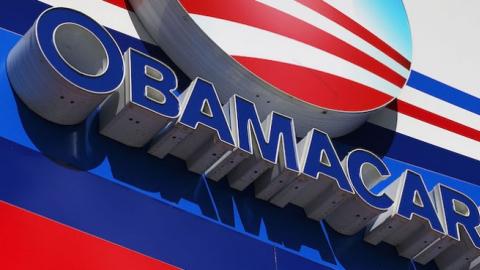Obamacare has caused health insurance premiums to skyrocket. It has caused millions of Americans who liked their health plans to lose their health plans. It has caused doctor and hospital networks to narrow. Now the Wall Street Journal reports that the Obamacare exchanges in Alabama and Alaska will each have one—that's right, one--insurer offering plans. We're moving toward "single insurer" health care.
In short, Obamacare is wrecking the private health insurance market.
So what are Americans getting in return? Obamacare's proponents say the overhaul has greatly increased the number of people with health insurance coverage (albeit by less than three-quarters as much as it was supposed to have done by this time). What they tend to omit is the fact that most of the "newly insured"—about 60 percent—have merely been dumped into Medicaid. According to the Congressional Budget Office, Obamacare has added only 8 million people—just 2.5 percent of the U.S. population—to the private insurance rolls.
And at what cost? Well, the CBO says that the Obamacare subsidies for private insurance will cost $43 billion this year alone. That's an average of $5,375 per person for those who have been added to the private insurance rolls—or $21,500 per family of four. Meanwhile, the typical 36-year-old (or younger) who makes $36,000 a year (or more) gets $0 under Obamacare. Such everyday Americans instead get to help finance that $5,375-per-person cost for those who get private insurance under Obamacare, while facing far higher premiums and significantly narrower doctor networks themselves.
As for those who Obamacare has newly enrolled in Medicaid, they are costing taxpayers even more—an average of $5,692 per person for this year alone ($74 billion divided by 13 million new enrollees).
Of course, the costs of Obamacare go well beyond these tallies. They include the cost of millions of people having lost their health plans and doctors, the cost of taxpayer-funded abortion, and the cost of having the federal government—for the first time in all of United States history—compel private American citizens to buy a product or service of the federal government's choosing. Under Obamacare, the power motive replaces the profit motive, government control supplants private control, and coercion trumps liberty.
It is past time for a genuine replacement that follows ten guidelines and can lead to the full repeal of Obamacare's 2,400 pages of federal largess. Such an alternative would offer commonsense consumer protections that don't wreck the insurance market. It would give Americans more control of their own health-care dollars so they can shop for value. And it would finally equalize the longstanding unfairness in the tax code that has undermined the market for individually purchased insurance for decades. (Why should someone who gets employer-based health insurance get a tax break while his next-door neighbor, who buys health insurance on his own, doesn't get a tax break?)
Such an alternative can lead to the full repeal of President Obama's signature legislation, revive the private insurance market, reinstate competition, rein in premiums, restore liberty, and reduce federal spending by about $1 trillion over a decade. In the process, it can go a long way toward reversing Obama's project of "fundamentally transforming the United States of America."
















